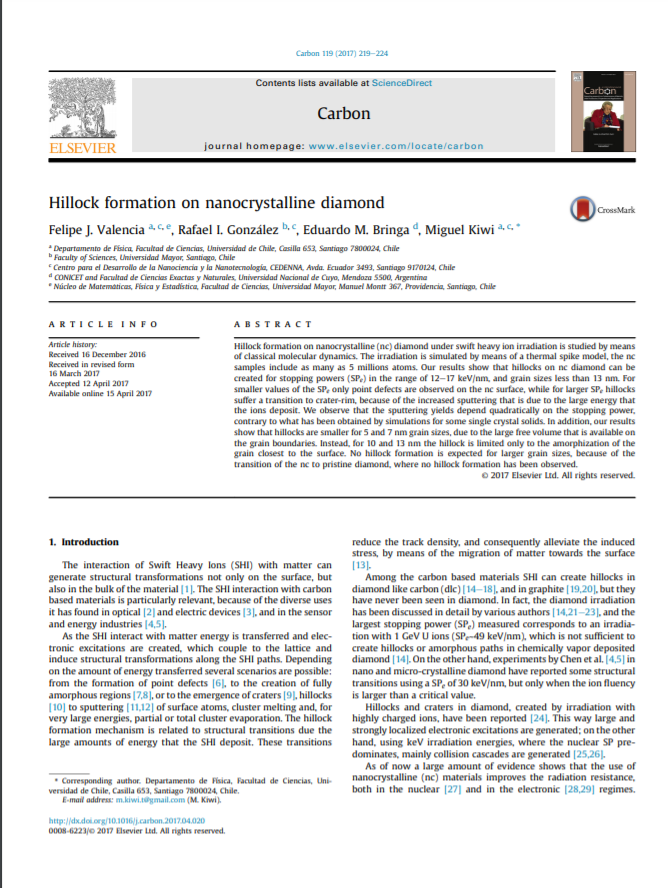Hillock formation on nanocrystalline diamond

Fecha
2017Autor
González R.I., Bringa E.M., Kiwi M.
Valencia Felipe J. [Núcleo de Matemáticas, Física y Estadística, Facultad de Ciencias, Universidad Mayor, Chile]
Ubicación geográfica
Notas
HERRAMIENTAS
Acceda a títulos restringidos
¿Cómo descargar?Resumen
Hillock formation on nanocrystalline (nc) diamond under swift heavy ion irradiation is studied by means of classical molecular dynamics. The irradiation is simulated by means of a thermal spike model, the nc samples include as many as 5 millions atoms. Our results show that hillocks on nc diamond can be created for stopping powers (SPe) in the range of 12-17 keV/nm, and grain sizes less than 13 nm. For smaller values of the SPe only point defects are observed on the nc surface, while for larger SPe hillocks suffer a transition to crater-rim, because of the increased sputtering that is due to the large energy that the ions deposit. We observe that the sputtering yields depend quadratically on the stopping power, contrary to what has been obtained by simulations for some single crystal solids. In addition, our results show that hillocks are smaller for 5 and 7 nm grain sizes, due to the large free volume that is available on the grain boundaries. Instead, for 10 and 13 nm the hillock is limited only to the amorphization of the grain closest to the surface. No hillock formation is expected for larger grain sizes, because of the transition of the nc to pristine diamond, where no hillock formation has been observed.
URI
http://repositorio.uchile.cl/bitstream/handle/2250/147075/Hillock-formation.pdf?sequence=1https://doi.org/10.1016/j.carbon.2017.04.020
http://repositorio.umayor.cl/xmlui/handle/sibum/6942
Coleccion/es a la/s que pertenece:
Si usted es autor(a) de este documento y NO desea que su publicación tenga acceso público en este repositorio, por favor complete el formulario aquí.